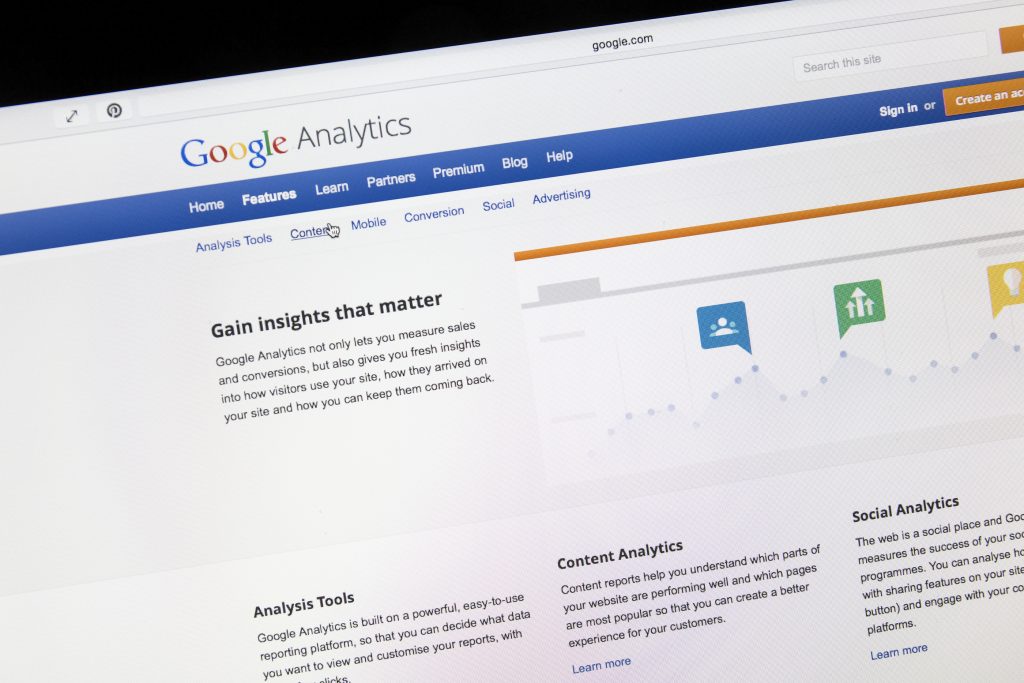Learning Hub | Google Analytics
Five Ways To Optimize Your Google Analytics Data
October 12, 2014 | Jon Teodoro

Google Analytics can be overwhelming. The wide variety of dimensions and metrics available in Google Analytics yields a seemingly endless combination of ways to interpret your data. It’s tempting to just dive right in and start analyzing away but reader beware! Your conclusions will only be as good as the context you originally set forth prior to your data analysis. In other words, you need to ask specific questions prior to analyzing your data, otherwise you may end up with the wrong answers.
Google Analytics definitely takes time and patience to learn but it isn’t rocket science either. Luckily, there are a few simple things that you can do to help you get a jump start on becoming more fluent in data analysis. Having been to many UX and analytics conferences and classes, I’ve yet to meet a true “master” at Google Analytics, however, implementing these five tips should help you get a little closer to becoming a Google Analytics Ninja.
1. Create custom views
Custom views are a great way to frame your data in reference to specific objectives. The default view gives you an unfiltered, bird’s-eye view of your data but that does you no good when you’re trying to examine only a subset of your website’s traffic. By using filters to customize your views, you can get a better snapshot of a specific set of desired data.
Learn how to create better custom views by using filters >>
2. Setup goal or conversion tracking
To a marketer, there is no greater reward than to see their campaigns flourish. The phone calls and emails start rolling in but where are they coming from? How many email leads were a result of my Facebook CPC campaign? How many phone calls were a result of my Google Adwords campaigns? There are common questions that setting up conversion tracking will help you answer.
How to setup goals in Google Analytics >>
Bonus: Setup event tracking with Gravity Forms for WordPress
3. Utilize Intelligence Events
Intelligence Events are becoming more of a regular tool now that marketers can get a more accurate view of what’s happening in real-time within Google Analytics. With Intelligence Events, you can be notified when anomalies or important events occur on your website. For example, by combining demographics data with Intelligence events, you can be notified when you get traffic spikes from specific cities or zip codes. Conversely, you can become notified when your traffic from specific cities or zip codes falls below a certain threshold.
Setup your first custom alert >>
4. Schedule regular and automated reports
With your busy schedule, you may forget to check on how your website is performing. With reports in Google Analytics, you can now have your data delivered to you periodically. If you’re managing websites for other clients or if you work in a large company, automated reports can be an excellent way to show off your data analysis skills to your clients or boss.
Learn more about scheduling reports >>
5. Setup custom campaigns in Google Analytics
By default, Google Analytics divides your incoming traffic into the following channels:
- Direct
- Organic Search
- Referral
- Paid Search
- Other Advertising
- Social
- Display
This is a great start in terms of tracking your data sources, but what about if you want to get more granular with your data? Setting up custom campaigns by tagging your URLs with the Google URL Builder is the answer. By using the Google URL Builder, you can assign custom campaign names, sources and mediums to your marketing channels. A great example of this is creating custom campaigns to divide your data into separate social networks (ex. Facebook, Twitter, LinkedIn) instead of grouping them all together into the default “Social” channel.
Setting up custom campaigns in Google Analytics >>
Tweaking your Google Analytics dashboard with this five tips is a great start to framing your data . The default, unconfigured data that Google Analytics presents is great, however, it needs context in order to be interpreted properly. Every business is different therefore a basic level of tailoring and customization to your business is crucial. Otherwise, you might be taking action on data that isn’t entirely accurate.
What are some other tweaks that you have used to optimize Google Analytics?
